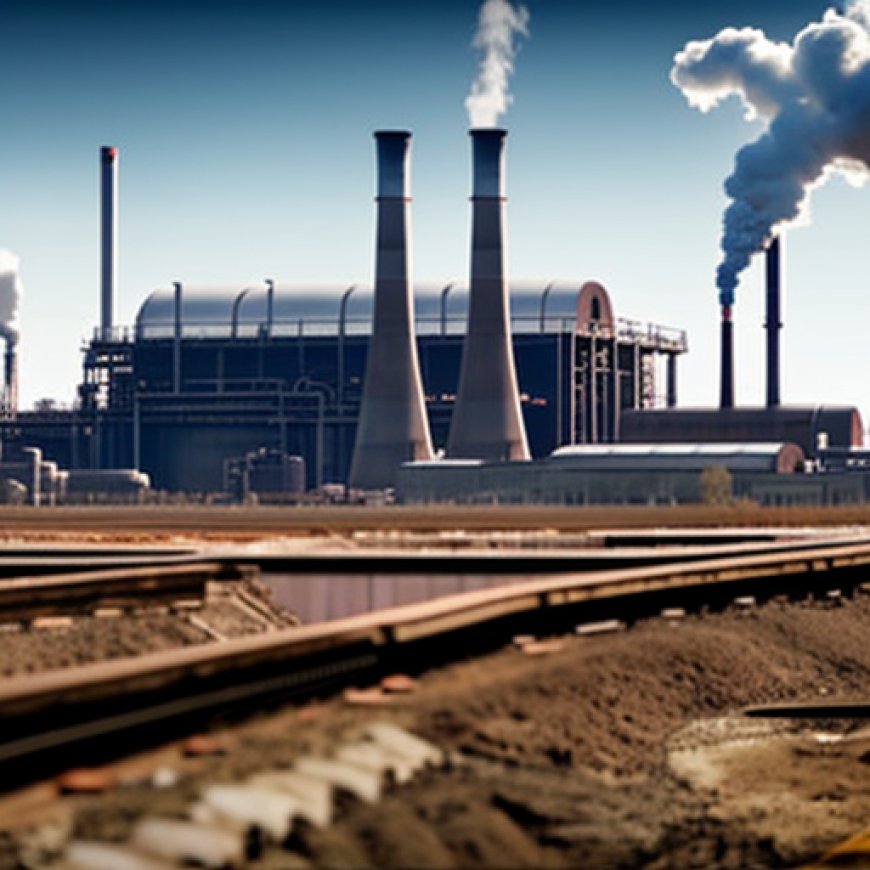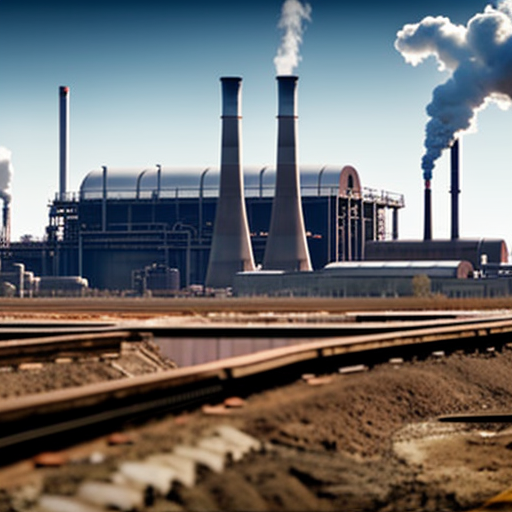US Steel plant in Indiana to host a $150M carbon capture experiment
US Steel plant in Indiana to host a $150M carbon capture experiment Canary Media


Capturing Carbon and Creating Value: CarbonFree’s Unique Proposition

Martin Keighley, CEO of CarbonFree, believes that his carbon capture company offers a unique proposition compared to its competitors: It can actually generate revenue today.
On Wednesday, CarbonFree announced its first large-scale project to prove this proposition. The $150 million initiative will take place at U.S. Steel’s Gary Works blast furnace in Gary, Indiana. By 2026, the project aims to capture 50,000 metric tons per year of the plant’s carbon dioxide emissions, mineralize it, and convert it into calcium carbonate, a widely used industrial product.
While this technology is not a complete solution to the steelmaking facility’s climate impact or its other toxic emissions, it represents a significant step towards commercial carbon emissions capture. Keighley stated that this project demonstrates a real commercial solution that transforms waste streams into valuable products, which can ideally fund further CO2 removal efforts.
CarbonFree’s SkyCycle Technology
CarbonFree’s proprietary SkyCycle technology treats the steelmaking facility as a provider of raw materials. The company combines the captured carbon from blast furnace gas with calcium extracted from slag, a byproduct of the steelmaking process. This process results in the production of calcium carbonate, which is used in various industries such as chemicals, construction materials, foods, and cosmetics.
The global market for calcium carbonate amounts to tens of billions of dollars annually. CarbonFree plans to produce a higher-value form called precipitated calcium carbonate (PCC), which is used in foods and pharmaceuticals and can fetch a price of $500 to $1,000 per metric ton.
With these prices in mind, the sales of approximately 100,000 metric tons per year of calcium carbonate produced at Gary Works could recoup the $150 million investment within a few years.
Capturing Carbon and Making Chemicals
CarbonFree’s business model differs from typical carbon capture and removal projects that rely on government subsidies. Many previous carbon capture efforts have been costly failures, and the future viability of carbon capture projects remains uncertain. Additionally, the latest climate science emphasizes the need for removing carbon from the atmosphere at a large scale to combat global warming.
Carbon capture and utilization projects like CarbonFree’s approach aim to make projects financially viable by putting captured carbon dioxide to use. However, most current projects plan to inject carbon dioxide into oil and gas wells, which conflicts with the need to reduce fossil fuel extraction and usage.
Another approach gaining popularity is storing carbon in cement and concrete. While this method effectively locks away carbon for decades or centuries, the low prices of these bulk commodities limit their financial value.
The Importance of Sustainable Development Goals (SDGs)
- SDG 7: Affordable and Clean Energy
- SDG 9: Industry, Innovation, and Infrastructure
- SDG 12: Responsible Consumption and Production
- SDG 13: Climate Action
- SDG 17: Partnerships for the Goals
CarbonFree’s project aligns with several Sustainable Development Goals (SDGs), including SDG 7 (Affordable and Clean Energy), SDG 9 (Industry, Innovation, and Infrastructure), SDG 12 (Responsible Consumption and Production), SDG 13 (Climate Action), and SDG 17 (Partnerships for the Goals). By capturing carbon emissions and transforming them into valuable products, CarbonFree contributes to the transition towards a more sustainable and low-carbon future.
SDGs, Targets, and Indicators
| SDGs | Targets | Indicators |
|---|---|---|
| SDG 7: Affordable and Clean Energy | Target 7.2: Increase the share of renewable energy in the global energy mix | No indicators mentioned in the article |
| SDG 9: Industry, Innovation, and Infrastructure | Target 9.4: Upgrade infrastructure and retrofit industries to make them sustainable | No indicators mentioned in the article |
| SDG 12: Responsible Consumption and Production | Target 12.2: Achieve sustainable management and efficient use of natural resources | No indicators mentioned in the article |
| SDG 13: Climate Action | Target 13.1: Strengthen resilience and adaptive capacity to climate-related hazards | No indicators mentioned in the article |
| SDG 14: Life Below Water | Target 14.1: Prevent and significantly reduce marine pollution of all kinds | No indicators mentioned in the article |
| SDG 15: Life on Land | Target 15.3: Combat desertification, restore degraded land, and soil | No indicators mentioned in the article |
1. Which SDGs are addressed or connected to the issues highlighted in the article?
SDG 7: Affordable and Clean Energy
The article discusses the carbon capture technology being implemented at a steelmaking facility to reduce its carbon dioxide emissions. This aligns with SDG 7, which aims to ensure access to affordable, reliable, sustainable, and modern energy for all.
SDG 9: Industry, Innovation, and Infrastructure
The article highlights CarbonFree’s innovative approach to carbon capture and utilization in the steelmaking industry. This relates to SDG 9, which focuses on promoting sustainable industrialization and fostering innovation.
SDG 12: Responsible Consumption and Production
The article mentions the production of calcium carbonate from captured carbon dioxide, which is used in various industries. This connects to SDG 12, which aims to ensure sustainable consumption and production patterns.
SDG 13: Climate Action
The article discusses the importance of carbon capture technology in reducing emissions from industrial processes like steelmaking. This aligns with SDG 13, which focuses on taking urgent action to combat climate change and its impacts.
SDG 14: Life Below Water
Although not directly mentioned in the article, carbon capture technology can contribute to reducing marine pollution by preventing carbon dioxide emissions from entering the atmosphere and potentially acidifying the oceans. This relates to SDG 14, which aims to conserve and sustainably use the oceans, seas, and marine resources.
SDG 15: Life on Land
Although not directly mentioned in the article, carbon capture technology can indirectly contribute to combating desertification and restoring degraded land by reducing greenhouse gas emissions and mitigating climate change. This connects to SDG 15, which focuses on protecting, restoring, and promoting sustainable use of terrestrial ecosystems.
2. What specific targets under those SDGs can be identified based on the article’s content?
Target 7.2: Increase the share of renewable energy in the global energy mix
This target is not directly addressed in the article. However, the implementation of carbon capture technology can contribute to reducing carbon dioxide emissions from non-renewable energy sources, indirectly supporting the transition to a cleaner and more sustainable energy mix.
Target 9.4: Upgrade infrastructure and retrofit industries to make them sustainable
The article highlights CarbonFree’s innovative approach to carbon capture and utilization in the steelmaking industry. By retrofitting the industry with carbon capture technology, it contributes to making the industry more sustainable and aligns with this target.
Target 12.2: Achieve sustainable management and efficient use of natural resources
The production of calcium carbonate from captured carbon dioxide can be seen as a way to efficiently use natural resources and reduce waste. This aligns with Target 12.2, which aims to achieve sustainable management and efficient use of natural resources.
Target 13.1: Strengthen resilience and adaptive capacity to climate-related hazards
The implementation of carbon capture technology in industries like steelmaking strengthens their resilience and adaptive capacity to climate-related hazards by reducing their greenhouse gas emissions. This aligns with Target 13.1, which focuses on strengthening resilience and adaptive capacity to climate-related hazards and natural disasters.
3. Are there any indicators mentioned or implied in the article that can be used to measure progress towards the identified targets?
No indicators are mentioned or implied in the article that can be used to measure progress towards the identified targets.
SDGs, Targets, and Indicators
| SDGs | Targets | Indicators |
|---|---|---|
| SDG 7: Affordable and Clean Energy | Target 7.2: Increase the share of renewable energy in the global energy mix | No indicators mentioned in the article |
| SDG 9: Industry, Innovation, and Infrastructure | Target 9.4: Upgrade infrastructure and retrofit industries to make them sustainable | No indicators mentioned in the article |
| SDG 12: Responsible Consumption and Production | Target 12.2: Achieve sustainable management and efficient use of natural resources | No indicators mentioned in the article |
| SDG 13: Climate Action | Target 13.1: Strengthen resilience and adaptive capacity to climate-related hazards | No indicators mentioned in the article |
| SDG 14: Life Below Water |








